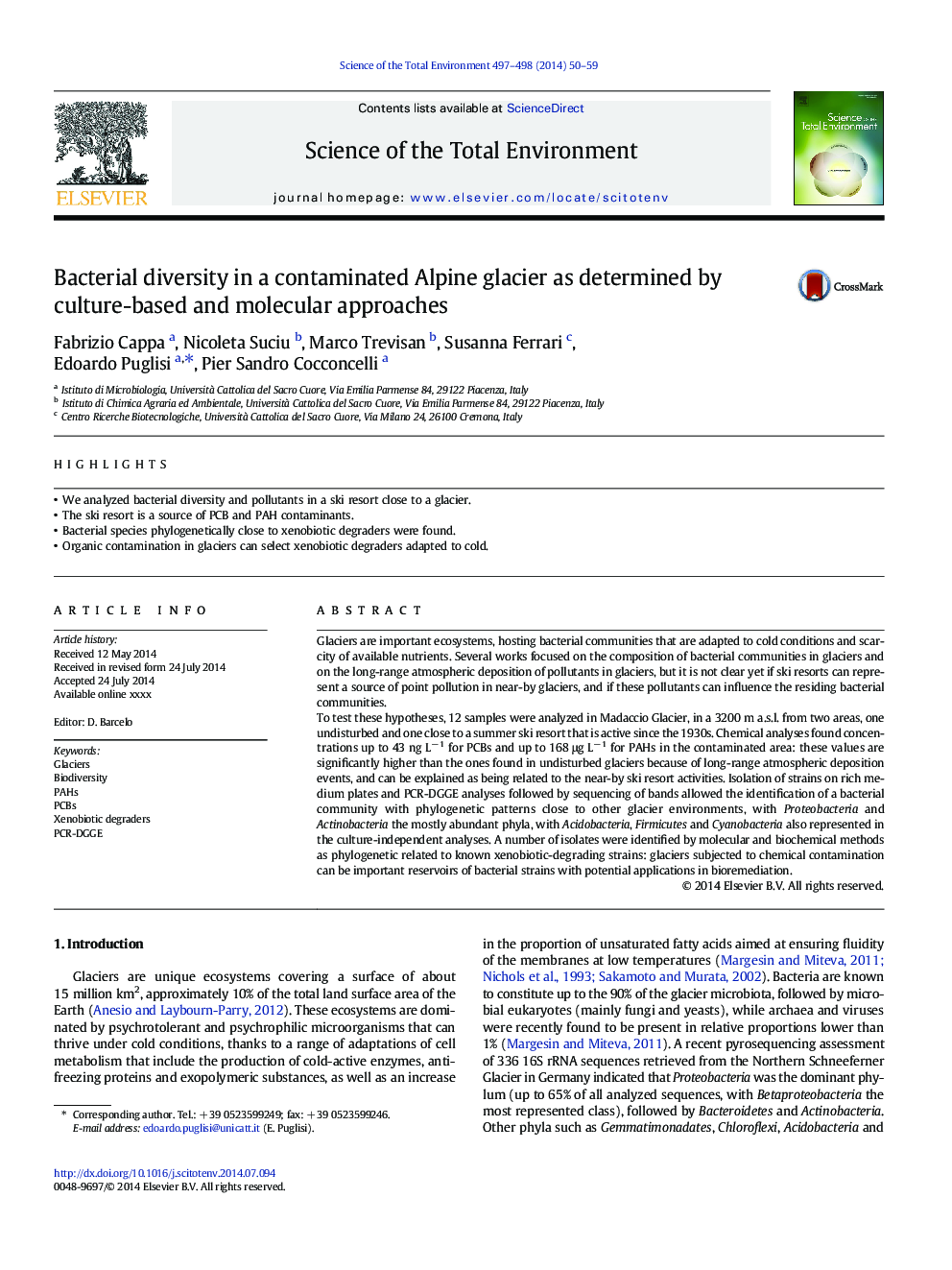| Article ID | Journal | Published Year | Pages | File Type |
|---|---|---|---|---|
| 6328607 | Science of The Total Environment | 2014 | 10 Pages |
Abstract
To test these hypotheses, 12 samples were analyzed in Madaccio Glacier, in a 3200 m a.s.l. from two areas, one undisturbed and one close to a summer ski resort that is active since the 1930s. Chemical analyses found concentrations up to 43 ng Lâ 1 for PCBs and up to 168 μg Lâ 1 for PAHs in the contaminated area: these values are significantly higher than the ones found in undisturbed glaciers because of long-range atmospheric deposition events, and can be explained as being related to the near-by ski resort activities. Isolation of strains on rich medium plates and PCR-DGGE analyses followed by sequencing of bands allowed the identification of a bacterial community with phylogenetic patterns close to other glacier environments, with Proteobacteria and Actinobacteria the mostly abundant phyla, with Acidobacteria, Firmicutes and Cyanobacteria also represented in the culture-independent analyses. A number of isolates were identified by molecular and biochemical methods as phylogenetic related to known xenobiotic-degrading strains: glaciers subjected to chemical contamination can be important reservoirs of bacterial strains with potential applications in bioremediation.
Keywords
Related Topics
Life Sciences
Environmental Science
Environmental Chemistry
Authors
Fabrizio Cappa, Nicoleta Suciu, Marco Trevisan, Susanna Ferrari, Edoardo Puglisi, Pier Sandro Cocconcelli,
